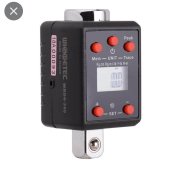@Itohmamma ,
I'm happy for you that you found a use for your liquid silicone pads.
Spacing cells 4.5mm by something semi solid isn't going to do much good.
Not for temperature, not for compression.
What works for you, work for you in your situation.
There isn't a LiFePO4 manufacturer that uses 4.5mm thick gelpads between the cells.
There are more videos on YouTube how professional builders build
.
Laser welding, aluminium busbars and housing under compression.
That's how it is intended to be used.
Not drilling a hole in the terminal, tapping thread..... And so on.
Sure, you can use your angle grinder to make a mixer.
It's also electro motor, have on/off switch, same wattage...
Just don't expect it to be as good as a mixer build by a factory, as mixer from the start...
We are NEVER going to have the same quality and stability a "pre-build" laser welded LiFePO4 battery.
Just only that we have inferior contact with the terminals is already a start.
The 300A example one post earlier...
Drilling holes and tapping threads was something "we" could get away with when the capacity was 20-50ah.
No one was even thinking about giving it "full load" of 50A, mainly because the chemistry wasn't capable yet, also...
The contact... It could not handle that much amperage.
Then things evolved..
50 to 100, to 200 and even 300A.
C rating went up, even to 2..
Only a fool would think that what you could get away with at low capacity, 50A, works the same at 300 or 600A!
The terminal surface did not increase.
50Ah, 150, 280, same terminal size.
When used as we do (not think we want or mightike to do), solar installation.
Charge during daytime, 8-12 hours.
We don't like empty, so we charge probably less then 75%.
In 8-12 hours.
Use at night, 12-16 hours...
C rating of 0.2 we probably never reach.
We can theorise all we want about how the cells would react with "high temperature" due long loads of C1 or C2 (+250A)..
Realistic... We won't use.
If ever... A spike for a short time.
14.5kw solar in Thailand, +1000Ah LiFePO4 and 16.5kw inverter..
Max...
My usual consumption with 2 airconditioning units, 950w mining rig, 2000 watt 50m pump, 1100 watt Reverse osmosis several other pumps (350-500w)...
Even with all 5 airconditioning working, the main pumps starting, I don't come close to the 16.5kw.
Usually it stays (far) under 5000w.
And I'm energy hungry

Electrical cars... That's a whole different ballpark.
DIY Solar forum does not cover this.



